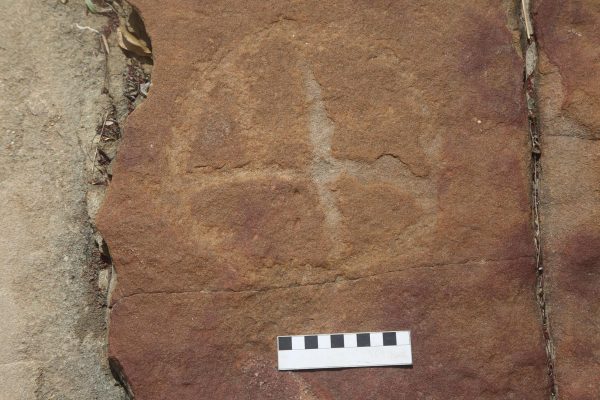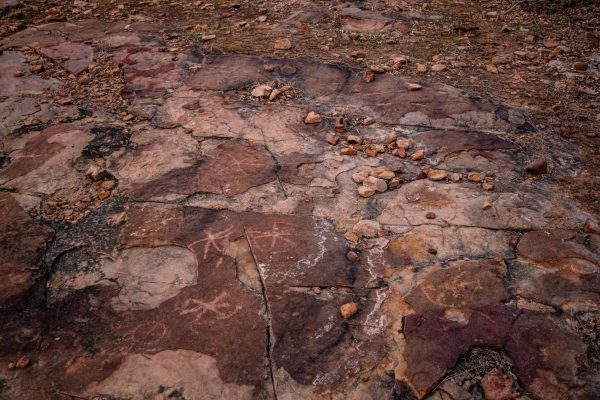 In a remote corner of Brazil’s Paraíba region, where echos of dinosaurs still resonate through the fossilized imprints of their footsteps, archaeologists have made an amazing discovery. Dating back to an unbelievable 9,000 years ago, lies a collection of intricate rock carvings, offering a glimpse into the lives of early human settlers in the area.
In a remote corner of Brazil’s Paraíba region, where echos of dinosaurs still resonate through the fossilized imprints of their footsteps, archaeologists have made an amazing discovery. Dating back to an unbelievable 9,000 years ago, lies a collection of intricate rock carvings, offering a glimpse into the lives of early human settlers in the area.
The carvings, called petroglyphs, are at a site called Serrote do Letreiro in Paraíba. At first, they discovered the markings in 1975, but now they are interpreted as related footprints following the recent field surveys helped by drones that uncovered previously unseen carvings. These tracks belong to multiple species of dinosaurs from the Cretaceous Period, which ended 66 million years ago.
The Serrote do Letreiro petroglyphs aren’t the first examples of rock art found near dinosaur tracks, but the study leaders say they believe that the association between the two at this particular site could have significant effects across paleontology and archaeology studies.
It’s unclear how the carvings were made, but a study said that radiocarbon dating has found burial sites in the areas to be between 9,400 and 2,620 years old, suggesting the tribes that left them must have lived during that time. “These people probably lived in small communities, using natural rocky shelters that are very abundant in the area,” Troiano said. The tracks belong to three different types of dinosaurs: theropods, sauropods, and ornithopods. The researchers suspect that the people who carved the rock might’ve mistaken the footprints for rheas, a large bird related to ostriches.
The discovery at Serrote do Letreiro offers a fascinating glimpse into the ancient past, highlighting the coexistence of early humans and dinosaurs in Brazil’s Paraíba region. This discovery holds significant implications for both paleontology and archaeology, enhancing our understanding of prehistoric life and human history.
















